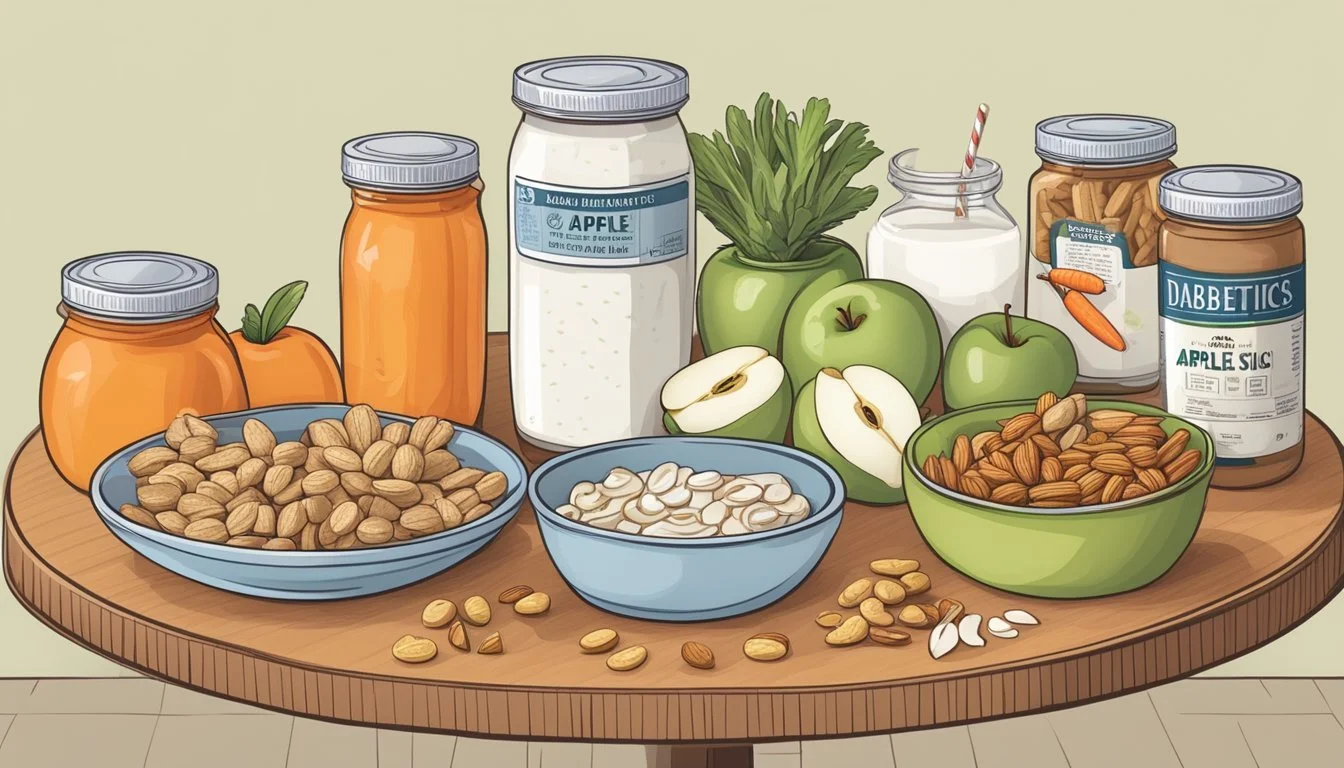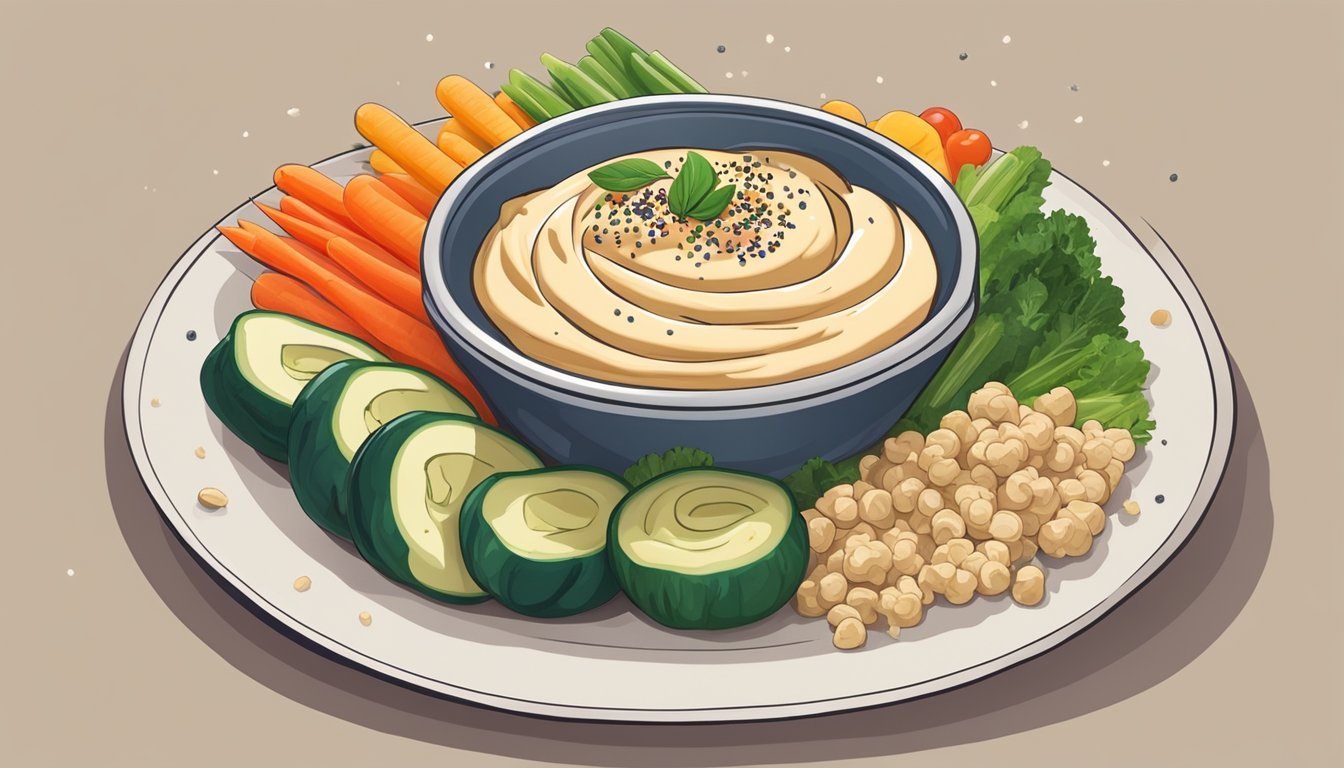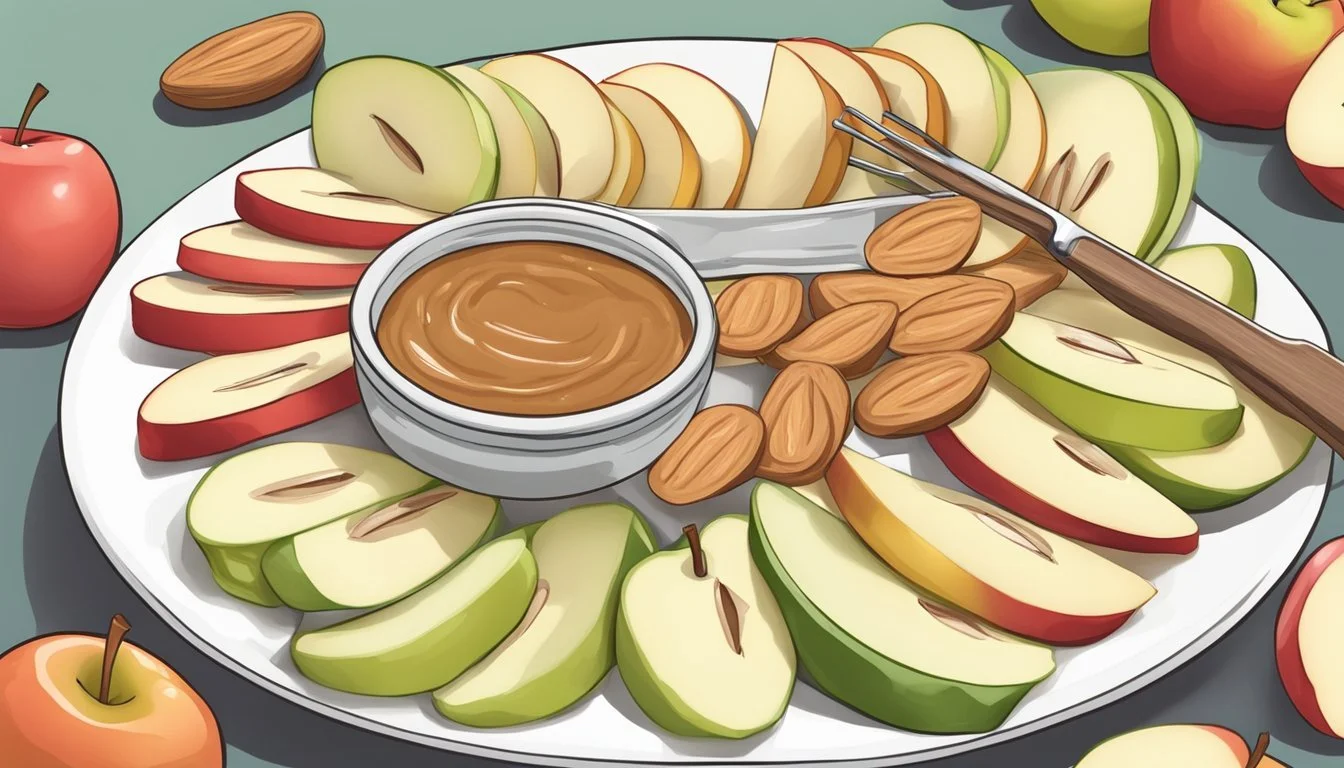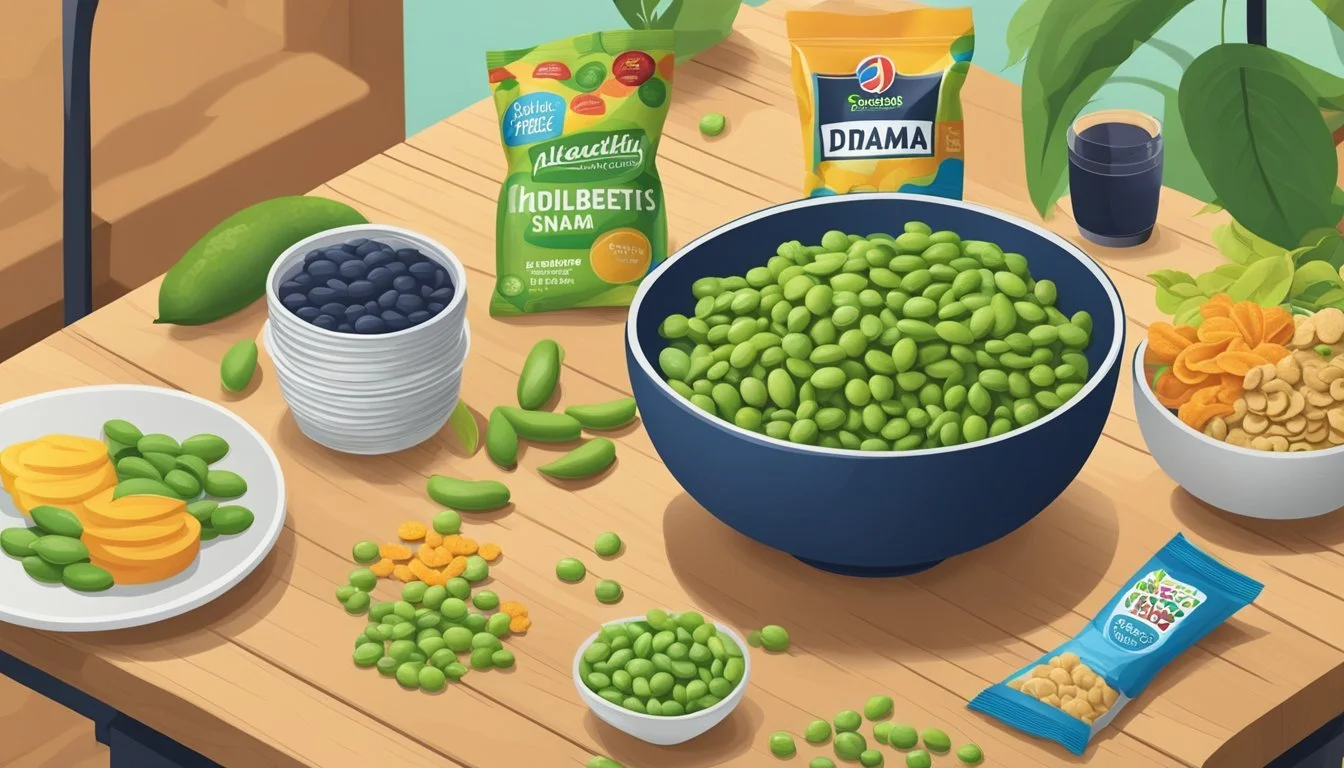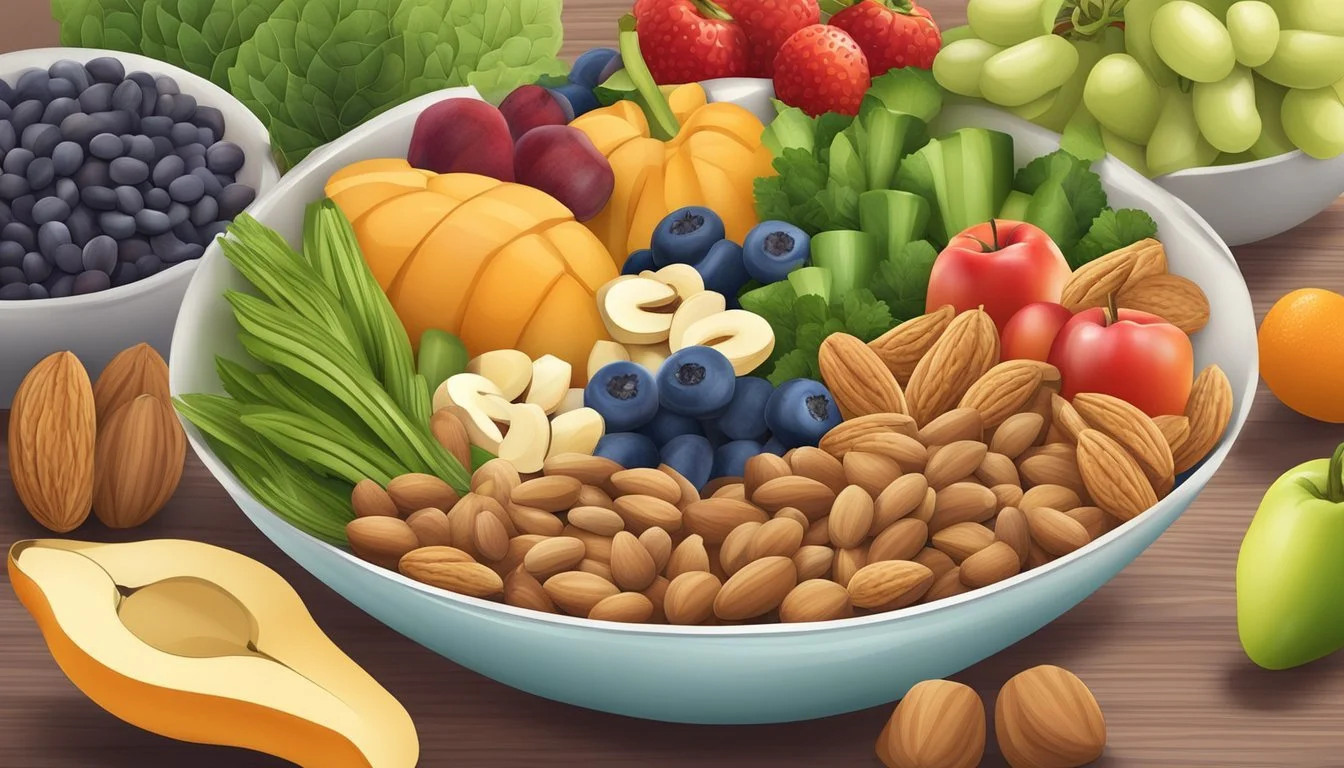10 Healthy Snack Swaps for Diabetics
Easy and Delicious Alternatives
Navigating snack choices can be challenging for individuals managing diabetes. Choosing nutritious options is essential for maintaining stable blood sugar levels and overall health. By making simple and informed swaps, diabetics can enjoy satisfying snacks without compromising their dietary needs.
Healthy snack swaps play a pivotal role in managing diabetes effectively. These alternatives often offer fewer added sugars, lower sodium content, and better nutritional profiles. This article will provide practical snack ideas that are both delicious and diabetes-friendly, ensuring that everyone can snack smartly and enjoyably.
1) Greek Yogurt with Berries
Greek yogurt with berries is an excellent snack for diabetics.
Unsweetened Greek yogurt contains high protein levels, which helps in maintaining steady blood sugar levels. The creamy texture and mild flavor of Greek yogurt make it a versatile base for various toppings.
Fresh berries, such as strawberries, blueberries, and raspberries, are naturally low in sugar. Their natural sweetness complements the yogurt, eliminating the need for added sugars.
Berries are also rich in fiber, which aids in digestion and further helps in blood sugar control. A small sprinkle of chia seeds can be added for extra fiber and omega-3 fatty acids.
Combining Greek yogurt with berries offers a nutrient-dense option that is both satisfying and beneficial for managing diabetes. It provides a balance of macronutrients and essential vitamins.
This snack is easy to prepare and can be enjoyed any time of the day, whether for breakfast, a mid-morning snack, or a light dessert. Keeping the preparation simple ensures that it remains healthy and diabetes-friendly.
2) Raw Veggies with Hummus
Raw veggies paired with hummus make an excellent snack for those managing diabetes. The combination provides a balance of carbohydrates, protein, and healthy fats. This balance helps in maintaining stable blood sugar levels.
Hummus, primarily made from chickpeas, offers fiber and protein. These nutrients slow down the digestion process, leading to gradual absorption of sugar into the bloodstream.
Vegetables like carrots, bell peppers, and cucumbers are low in calories and high in fiber. They complement hummus well and add valuable vitamins and minerals to the diet.
This snack is also convenient and easy to prepare. Pre-cut vegetables and store-bought hummus can quickly be put together, making it a practical option for busy individuals.
In addition to its nutritional benefits, raw veggies with hummus are satisfying and can help curb hunger between meals. This can be particularly beneficial in preventing overeating during main meals.
3) Almond Butter on Apple Slices
Almond butter on apple slices provides a delightful balance of flavors and nutrients. This snack combines the natural sweetness of apples with the rich, nutty taste of almond butter.
Apples are low in calories and high in fiber, which helps in managing blood sugar levels. They also provide a good source of vitamins and antioxidants.
Almond butter adds a protein boost to this snack. It contains healthy fats and fewer carbs compared to other nut butters, making it suitable for diabetics.
This combination offers a satisfying crunch and sweetness, making it a great choice for a mid-day snack. Additionally, the healthy fats in almond butter help to keep you full longer.
4) Chia Seed Pudding
Chia seed pudding is an excellent snack swap for diabetics due to its low glycemic index and rich nutrient profile. Chia seeds are high in fiber, which helps regulate blood sugar levels, and they provide a good source of Omega-3 fatty acids.
To prepare a basic chia seed pudding, combine chia seeds with a liquid such as unsweetened almond milk or coconut milk. Stir the mixture well and let it sit in the refrigerator for a few hours or overnight. This gives the chia seeds time to absorb the liquid and form a pudding-like texture.
For added flavor and variety, incorporate healthy toppings such as fresh fruit or nuts. Berries, in particular, are a great choice since they are low in sugar and packed with antioxidants. A small amount of natural sweetener like Stevia can be added if desired.
Experiment with different flavor combinations to keep things interesting. Peanut butter and jelly, chocolate with cacao nibs, or a tropical mix with kiwi and clementines are all delightful options.
Chia seed pudding is easy to prepare and versatile, making it a convenient and healthy snack for managing diabetes.
5) Cottage Cheese with Pineapple
Cottage cheese is a nutritious option for diabetics due to its high protein and low carbohydrate content. It helps stabilize blood sugar levels, making it a reliable snack choice.
Pairing cottage cheese with pineapple adds a burst of flavor and nutritional benefits. Pineapple is rich in fiber and vitamin C, which aid digestion and support immune health.
Moderation is important when incorporating pineapple into a diabetic diet. Despite its natural sugars, it’s a good source of anti-inflammatory compounds that can benefit diabetic individuals.
Combining cottage cheese and pineapple offers a balanced snack that satisfies sweet cravings while providing essential nutrients. This pairing is not only delicious but also supports overall dietary goals for diabetes management.
6) Plain Popcorn
Plain popcorn is a wholesome snack option for diabetics. This popular treat is low in calories and fat, making it a guilt-free choice.
Air-popped popcorn has a medium glycemic index (GI) score of 65. This means it has a moderate impact on blood sugar levels. It contains around 21 grams of carbohydrates per serving, primarily composed of complex carbs.
Additionally, plain popcorn is a good source of dietary fiber. It helps in maintaining steady blood sugar levels and aids digestion.
Popcorn's low-calorie content makes it an ideal snack for weight management. Portion control is key, as overconsumption can still spike blood sugar.
Opt for air-popped or lightly seasoned varieties to avoid added fats and sodium. Avoid heavily buttered or flavored popcorn, which can negate its health benefits.
Plain popcorn can be a satisfying snack that fits well into a diabetic-friendly diet.
7) Dark Chocolate Squares
Dark chocolate squares make an excellent snack choice for diabetics. Dark chocolate is rich in flavonols, which may help lower blood sugar levels and reduce the risk of heart disease. These benefits are particularly valuable for those managing type 2 diabetes.
It's crucial to choose dark chocolate with at least 70% cocoa content. Higher cocoa content typically means lower sugar levels. This helps in maintaining stable blood glucose levels.
Moderation is key. A small portion, such as one or two squares, can satisfy sweet cravings without causing a spike in blood sugar. Portion control prevents overconsumption, which is essential for proper diabetes management.
8) Edamame
Edamame, or immature soybeans, provide a nutritious snack option for diabetics. Rich in high-quality protein and valuable fiber, they help in maintaining stable blood sugar levels. A single cup of cooked edamame offers approximately 18 grams of protein, making it a substantial choice for those looking for plant-based nutrients.
The presence of fiber in edamame aids in digestion and promotes a feeling of fullness, which can help in managing weight. Weight management is crucial for diabetics as it directly impacts blood sugar control.
Edamame is also cholesterol-free and loaded with essential vitamins and minerals. These include vitamin K, folate, and manganese. This contributes to overall health and can support metabolic functions.
Convenient and easy to prepare, edamame can be enjoyed simply steamed or roasted. This makes it a versatile option for snacks, whether at home or on the go. Adding a sprinkle of sea salt or a dash of soy sauce can enhance its flavor without adding excessive calories or sugar.
Including edamame in the diet offers diabetics a nutrient-dense snack that's both satisfying and beneficial for blood glucose regulation.
9) Mixed Nuts
Mixed nuts offer a versatile and nutritious snack option for people with diabetes.
Rich in healthy fats, protein, and fiber, they help maintain stable blood sugar levels. Almonds, walnuts, and pistachios are particularly beneficial due to their favorable fat profiles and lower carbohydrate content.
Consuming a small handful can keep hunger at bay between meals, reducing the temptation to reach for sugary snacks.
Additionally, the various textures and flavors in mixed nuts make them enjoyable and satisfying. Opt for unsalted and raw or dry-roasted varieties to avoid added sodium and unhealthy oils.
Portion control is key, as nuts are calorie-dense. Measuring out a serving size can help prevent overindulgence.
Incorporating mixed nuts into a diabetic-friendly diet supports heart health and promotes sustained energy levels.
10) Avocado on Whole Grain Toast
Avocado on whole grain toast makes a nutritious and satisfying snack for diabetics. The healthy fats in avocado help keep you feeling full longer. These fats can also help lower bad cholesterol levels.
Avocados are low in carbohydrates, which means they have a minimal impact on blood sugar levels. Additionally, they are high in dietary fiber. Fiber promotes better digestion and helps regulate blood sugar spikes.
Whole grain toast adds to this snack's benefits. Whole grains are digested more slowly than refined grains, leading to a steadier release of glucose into the bloodstream. This helps in maintaining stable blood sugar levels.
To prepare, simply mash half an avocado and spread it on a slice of whole grain bread. Adding a pinch of salt, pepper, or chili flakes can enhance the flavor without adding unwanted sugars or carbs.
This easy-to-make snack is both delicious and supportive of a diabetic-friendly diet. Its combination of fiber, healthy fats, and whole grains makes it a balanced choice for anyone looking to manage their blood sugar effectively.
Understanding the Glycemic Index
The glycemic index (GI) measures how different foods impact blood sugar levels. Foods are ranked from 0 to 100, and this can influence dietary choices, especially for diabetics.
Impact on Blood Sugar Levels
High glycemic index foods cause rapid spikes in blood sugar.
These include white bread, sugary drinks, and certain fruits like watermelon. Rapid spikes can be dangerous for diabetics as they can lead to hyperglycemia.
Low glycemic index foods lead to gradual increases in blood sugar.
Examples include whole grains, most vegetables, and legumes. Gradual changes help maintain better control over blood sugar levels, reducing the risk of complications.
Understanding these impacts helps with meal planning.
It guides diabetics in choosing foods that keep blood sugar levels steady without rapid fluctuations.
Choosing Low Glycemic Index Snacks
Low glycemic index snacks are ideal for managing diabetes.
Examples of such snacks include:
Roasted chickpeas: A nutritious option with protein and fiber.
Avocado toast: Made with whole grain bread to keep the GI low.
Greek yogurt with berries: Offers protein and fiber without the high sugar content.
Pairing foods efficiently helps maintain a balanced diet.
Combining protein, fats, and fiber in snacks can lower the GI of a meal, leading to more stable blood sugar levels.
Awareness of low glycemic index snacks improves health outcomes.
Making informed decisions about snack choices can significantly contribute to overall diabetes management.
Benefits of Healthy Snack Swaps for Diabetics
Healthy snack swaps offer numerous advantages for diabetics, primarily by helping to manage blood sugar levels and improving nutritional intake.
Improving Blood Sugar Control
Choosing healthier snacks can significantly stabilize blood sugar levels. Swapping high-sugar snacks like candy bars for options like hummus and veggies or fruit and nut butter can prevent unwanted spikes and crashes in glucose levels.
Complex carbohydrates, such as whole grain options, release sugars more slowly compared to refined grains, promoting steady blood sugar management. Additionally, snacks high in fiber aid in slowing down sugar absorption, reducing the likelihood of blood sugar spikes. Fiber-rich snacks might include chickpeas and whole fruits with skin.
Protein-rich snacks, such as cottage cheese with cucumber or light cheese triangles, also contribute to more stable blood sugar levels. These proteins not only slow down the absorption of carbohydrates but also promote satiety, making it less likely to overeat.
Enhancing Overall Nutrition
Healthy snack swaps enhance overall nutrition by incorporating more vitamins, minerals, and essential nutrients into a diabetic’s diet. For example, swapping chips for light popcorn or a side salad increases the intake of fiber and essential nutrients while reducing unhealthy fats and calories.
Fruit swaps, such as enjoying pineapple rings or a small portion of raisins, provide natural sugars and essential vitamins without the added sugars found in processed snacks. Nut butter paired with apple slices or celery sticks adds healthy fats and protein, contributing to a balanced nutritional profile.
Incorporating a variety of colored vegetables and lean proteins in snacks ensures a broad spectrum of nutrients. These swaps foster better overall health and support the specific dietary needs of diabetics, promoting wellness beyond blood sugar control.
Mindful Eating Practices
Mindful eating helps individuals with diabetes make better snack choices and manage blood sugar more effectively. This section focuses on portion control strategies and how to read nutrition labels to make informed decisions.
Portion Control Strategies
Portion control is essential for diabetes management. Using smaller plates and bowls can help reduce portion sizes without feeling deprived. It’s recommended to use measuring cups and a food scale to ensure accurate servings, especially when starting.
Mindful eating also involves eating slowly and savoring each bite. Putting the fork down between bites and taking time to chew can help recognize fullness cues. Pre-portioning snacks in advance prevents overeating and makes it easier to grab a healthy option on the go.
Some find it helpful to avoid eating directly from large packages. Instead, placing a single serving on a plate or in a bowl can make portion control manageable. Visual cues like the size of a fist or deck of cards can serve as handy references for portion sizes of various foods.
Reading Nutrition Labels
Understanding and reading nutrition labels can be a powerful tool. Start by looking at the serving size and the number of servings per container to ensure accurate information. Note the total carbohydrates, fiber, sugars, and protein, as these are crucial for managing diabetes.
Focus on total carbohydrates as this impacts blood sugar levels. Aim to balance carb intake throughout the day. Dietary fiber is beneficial as it helps slow the absorption of glucose. It's advisable to choose snacks with higher fiber content.
Check for added sugars, which can spike blood sugar quickly. Opt for snacks with minimal to no added sugars. Ingredients lists can also reveal hidden sugars and unhealthy fats. Recognizing names such as high fructose corn syrup or hydrogenated oils can help avoid less nutritious options.
By integrating portion control strategies and understanding how to read nutrition labels, mindful eating becomes an effective way to manage diabetes and maintain a healthy lifestyle.

